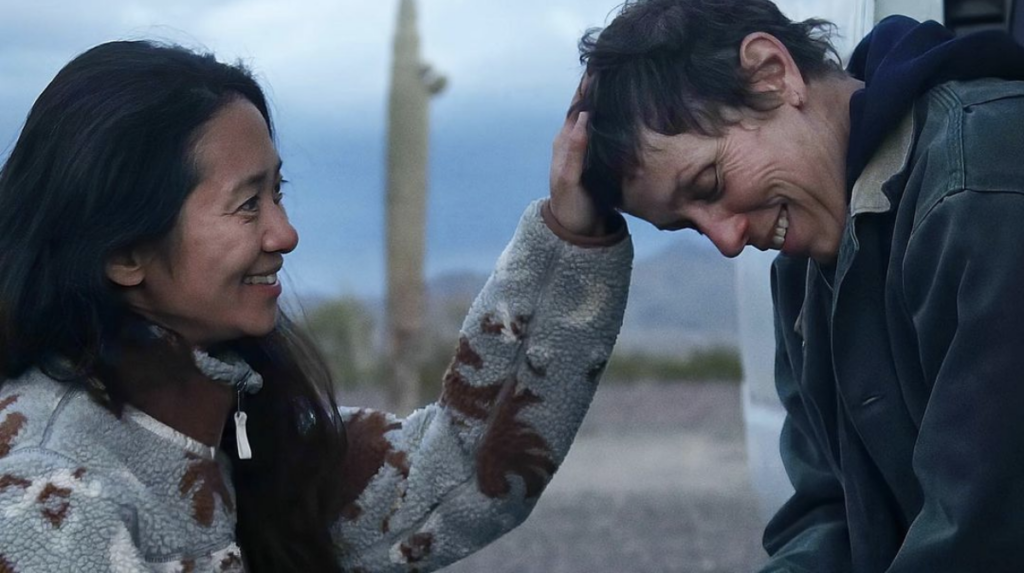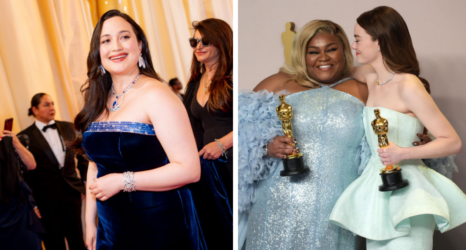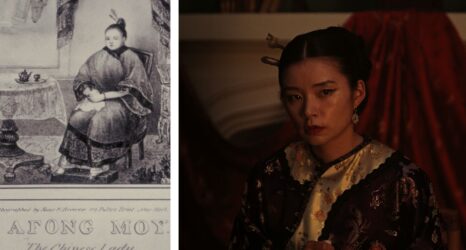Against the odds, women in film continually break glass ceilings in the box office and on silver screens—but the need for a more inclusive space in film is clear.

This month marks four years since women’s allegations against Harvey Weinstein and other powerful men brought national attention to the widespread problem of sexual abuse in the entertainment industry. #TimesUp was born. But despite the cultural gains made—almost everyone knows the hashtag—in many ways the movement has stalled out, failing on its original promise.
A central problem, according to a recent webinar sponsored by the Institute for Innovation in Prosecution, is police have been slow to follow the #MeToo tenet: “Believe women.”
But what about within Hollywood, where #TimesUp might appear to have made the greatest progress, particularly in its stated mission of advancing gender equity in the workplace? The results are mixed.
On an optimistic note, the percentage of women who directed top-grossing feature films reached a historic high in 2020. Women directed 18 percent of these studio movies—doubling from 9 percent in 1998. This increase is a major victory, after we had witnessed a halt, hovering frustratingly between 5 percent and 11 percent, in the research published annually by the Center for the Study of Women in Television and Film at San Diego State University. I would attribute this directly to the reform pressure from #MeToo, #TimesUp and such initiatives as the 4% Challenge.
However, these positive numbers mask more somber news.
Women directors of color have far fewer opportunities. According to a study by the Annenberg Inclusion Initiative, although 2018 saw the highest number of Black directors in its sample (which ran from 2007 to 2018), with 16, only one was a woman: Ava DuVernay.
Only 13 women from underrepresented racial and ethnic groups directed any of the 1,300 top movies from 2007 to 2018.
In other words, women from underrepresented groups held less than 1 percent of those directing positions.
All Women Are Losing Ground Across the Board
We see this in the realms of streaming and television, which have historically been more inclusive.
The percentage of women creators working on streaming programs has gone down by 3 percent in the last year—from 33 percent in 2019-2020 to 30 percent in 2020-21.
On broadcast network programs the percentage of women creators declined by 4 percent—from 26 percent in 2019-20 to 22 percent in 2020-21.
After hundreds of diversity initiatives at the highest corporate levels, the many fellowships, workshops, labs, mentorship programs—not to mention conferences, panels and working groups—why have we not significantly altered these numbers?

It’s tempting to be heartened by so-called milestone events, as when two women were nominated for Best Directing Oscars in 2021 (Chloé Zhao for Nomadland and Emerald Fennell for Promising Young Woman), or by the industry presence of powerhouse figures such as Ava DuVernay and Shonda Rhimes. But appearances mask the fact that many of the same women get hired repeatedly while the vast majority compete for the few remaining slots.
The Sad Fact: Women in Film Had It Much Better 100 Years Ago
In 1921, before the industry was corporatized and formalized, women worked in all positions, at every level, on the East and West Coasts, and the many states in between. Regions such as Kansas City were vital centers for production, distribution and exhibition for African American women.
As Universal Pictures set up its massive lot in Los Angeles, it had the largest concentration of women directors, writers, actors and producers of any studio—a phenomenon historians call the Universal Women. Once Hollywood began making money in the late 1920s, and became an industry, women were pushed out.
Once Hollywood began making money in the late 1920s, and became an industry, women were pushed out.
Forty years ago, in 1980, a group known as the Original Six (and eventually the Women’s Steering Committee of the Director’s Guild of America, or DGA) surveyed movies and television made from 1949 to 1979. They found only one fifth of one percent had been directed by women.
The DGA then filed a class action suit against Warner Bros. and Columbia in 1983, charging discrimination against women and underrepresented groups by white male executives. They sought to set up an affirmative action plan and provide back pay and seniority for persons wrongfully denied employment. The class action suit was dismissed, but studios pledged to engage in better practices. Yet women continued to struggle in the industry.
Women in Film Are Done Waiting
Why does gender inequality hold so powerfully and for so long? Because it serves white male executives to perpetuate myths about what women do and what we want. They continue to say audiences don’t support ‘women’s movies’ at the box office. They insist women can only tell certain kinds of stories, they are risky financial bets and there aren’t enough qualified women in the pipeline. By closing doors and staying rigid, they create self-fulfilling, self-serving prophecies.
These biases held director Patty Jenkins back for more than a decade following the success of her award-winning Monster (2003), the biographical crime drama based on the life of Aileen Wournos. When finally given the chance to helm Wonder Woman in 2017, she proved executives wrong. Setting box office records (the film made over $818 million worldwide), Jenkins debunked the long-peddled claim that female superhero movies didn’t sell.
It’s 2021. Time is way up. We must renew our commitment to believe all women. But let’s add a new one: Believe in all women.
We know change comes when companies commit to bold hiring practices. The Disney-owned network FX did just this, to astounding results.
A 2015 Variety report by Maureen Ryan called FX out, showing FX ranked at the very bottom in directorial diversity, with white men holding 88 percent of directing positions. In response, FX CEO Jon Landgraf made sweeping changes and within less than a year that number had dropped to 49 percent.
In 2016, Landgraf announced within three years, at least 63 percent of its programming would be directed by women or people of color. The FX case has been not just instructive, but inspirational. In Landgraf’s most recent hiring projections, released in fall 2020, people of color were set to direct nearly half (46 percent) of the FX network’s episodes in 2021. Women were expected to direct 35 percent of episodes in 2022. The tangible result of these practices is the diversity and range of stories and characters on FX has increased dramatically.
Let’s challenge heads of studios and corporate decision-makers to think ambitiously and creatively.
What if #TimesUp co-founder Christy Haubegger, who recently assumed the newly created position of SVP, creative and cultural diversity, at Warner Bros., stepped up and promised to fill 50 percent of WarnerMedia’s directing and producing positions with women? Who better than Haubegger to go for full equality? And why not WarnerMedia, one of the largest and most powerful studios among the major five?
We won’t wait another 100 years and we don’t have to. Let’s #BelieveInAllWomen.
Up next:





